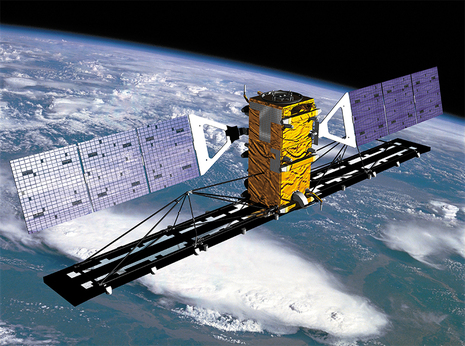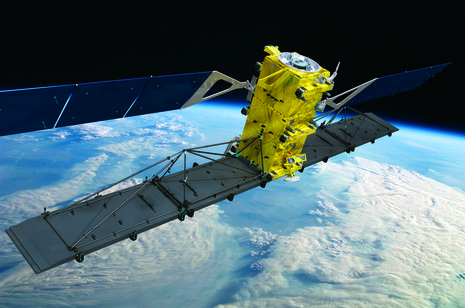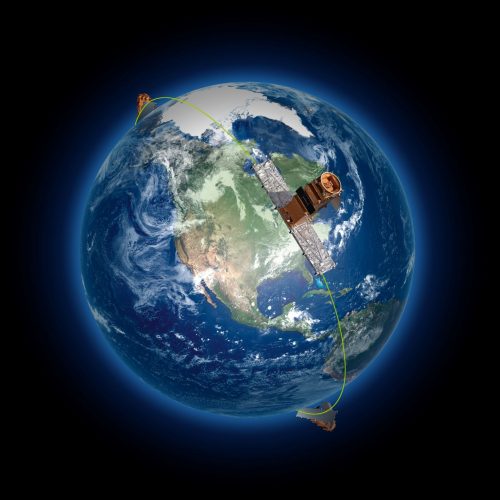
MDA and the Government of Canada are using advanced radar satellites to stop illegal fishing.
Illegal and unregulated fishing accounts for 11 to 26 million tonnes, or roughly 12 to 28 per cent, of fishing globally. Sixty-one per cent of world fish stocks are fully fished, and 29 per cent are overfished. This makes illegal fishing a worldwide problem, affecting legal fishing and the overall health of every ocean and sea on Earth.

In the face of such a global problem, it would be easy to think that it could be too large to solve. However, one Canadian company, MDA, and the Government of Canada have come together to use their expertise in Earth observation to tackle this challenge.
A leading provider of advanced technology and services to the rapidly expanding global space, MDA is Canada’s premier earth observation company. Established in Vancouver, Canada in 1969, it works across a spectrum of space-based technologies including robotics and space operations, geointelligence, and communications satellites. MDA and the Government of Canada have enjoyed a long and productive history together in earth observation (EO).
In 2021, MDA announced it was awarded a three-year contract with the Government of Canada Department of Fisheries and Oceans (DFO), for the use of satellite technology to detect and locate illegal, unreported, and unregulated fishing vessels and activities (IUU). This program is called the Dark Vessel Detection program (DVD).
The program leverages MDA’s synthetic aperture radar called RADARSAT-2, to detect, locate, and track vessels that are attempting to avoid monitoring, contact and surveillance, often by turning off their location-transmitting devices.
 MDA is a global leader in the use of radar in EO applications. Over the course of its operational lifetime, RADARSAT-2 has amassed a deep global archive, making it especially useful in conjunction with behavioural analytics and artificial intelligence (AI) applications. The DVD program aims to provide actionable data to its users.
MDA is a global leader in the use of radar in EO applications. Over the course of its operational lifetime, RADARSAT-2 has amassed a deep global archive, making it especially useful in conjunction with behavioural analytics and artificial intelligence (AI) applications. The DVD program aims to provide actionable data to its users.
Actionable data is information that can be acted upon about the present or information that gives enough insight into the future that it is clear for decision makers what actions they should take. It needs to be reliable, meaning all data sources can be trusted and the source has high availability; near-real-time in that it represents the up-to-date situation; and is complete, meaning it contains enough required information to allow users to make a confident decision. RADARSAT-2 provides these key data benchmarks to decision makers.
In June of 2022, MDA announced that it has given Global Fishing Watch (GFW), an international non-governmental organization, access to RADARSAT-2’s archival data, representing over a decade-long record of the Earth and oceans. In combination with AI and behavioural analytics, GFW’s project will enable international policymakers, researchers, and conservationists to be more effective when fighting illegal practices.
RADARSAT-2’s data is especially useful for combating illegal fishing because it penetrates the atmosphere including any clouds and precipitation. In particular, RADARSAT-2’s C-Band is excellent at detecting and locating mid-to-large-sized vessels with incredible accuracy.

Archival data is only part of the puzzle; the other important piece is how AI and behavioural analytics fit into the picture. We asked Dr. Minda Suchan, Vice President of Geointelligence at MDA to tell us more about the importance of AI and behavioural analytics.
“AI is used in many aspects of maritime domain awareness and analysis including the initial detection of vessels, how those vessels are behaving, and in vessels at risk of illegal, unreported, and unregulated fishing,” said Dr. Suchan. “Leveraging MDA’s extensive RADARSAT-2 archive, AI can help to quickly extract useful information and fuse it with other data sources for the full picture of what is going on our oceans.”
This archival data comes with an important advantage.
Dr. Suchan explained, “Comparing historical and contemporary data allows the user to pick specific maritime events in the past and analyze whether there is a pattern of life that is connected to the events. It can then be used as a leading indicator of the events in the future.”
The importance of MDA, the DFO and NGOs like GFW working together to reduce illegal fishing and protect the global seafood supply chain cannot be overstated. Together, they are ensuring global ocean health, protecting critical national resources and ensuring the livelihoods of legal fishers.




Be the first to comment